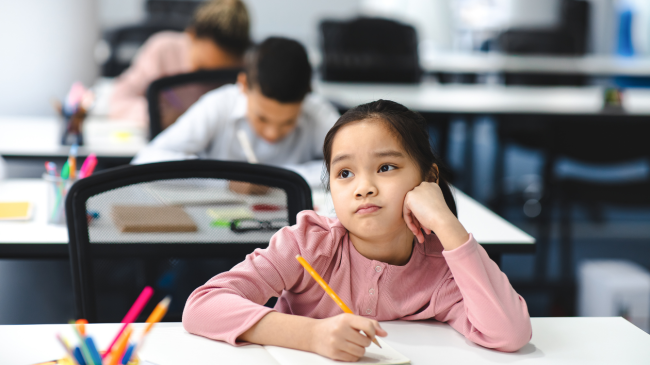
This article by Spencer Brown was published March 28, 2023 on townhall.com.
What would you do if you couldn’t account for $70 in your regular budget? $700? What about more than $700 million? Well, that’s the mess that has emerged from yet another failure of government to provide oversight and accountability for funds from hardworking American taxpayers allocated to schools by Congress as a supposed answer to the COVID-19 pandemic.
According to a new report from the National Opportunity Project (NOP) released this month, some “$736 million of federal aid has failed to reach the nonpublic schools and students it was intended for.” What’s more, at least “$585 million, if not more, of the $736 million that has yet to reach nonpublic schools is at risk of being directed away from schools that need it.”
While it’s nothing new for the federal government to botch attempts to throw money at problems, NOP chocks this instance up to government “mismanagement at federal and state levels” that “ultimately kept qualified schools from accessing funds designated for them by Congress.”
The funds were initially allocated three years ago, as NOP explains:
Congress made available nearly $200 billion through federal COVID relief starting in 2020. About 97% of this funding went to government-run public schools. After a push from stakeholders to acknowledge the harm of government-mandated closures on nonpublic schools, Congress created Emergency Assistance to Nonpublic Schools (EANS) and allocated $5.5 billion in aid to nonpublic schools with low-income students severely impacted by Covid.
NOP’s report is the first comprehensive analysis of EANS program funding, and its findings are a stinging indictment of the clumsy and ineffective hand of government. Their report identifies five key issues with the way tax dollars were handed over and subsequently didn’t end up actually helping students.
According to NOP, some states used aid dollars as “a slush fund” that disincentivized state authorities from allocating all the funding when it was received due to “a little-discussed statutory spoiler” known as a “reversion clause” that permits money that doesn’t get allocated to schools “to be used by the governor for virtually any educational purpose.” NOP’s analysis found “at least $157 million that states didn’t allocate to nonpublic schools has already ended up back in the hands of governors.”
The “arbitrary” parameters for the program also caused issues. “States were left to decide how to notify schools of the program, calculate the impact of Covid on schools, and how to measure the low-income student enrollment in order to qualify for EANS funds,” NOP explains in its report. The result was “a lopsided and inconsistent distribution of funds.”
The EANS spending guidelines were also more restrictive than other funds allocated to public schools. EANS fund recipients were “severely limited” and primarily allowed to acquire “sanitation supplies, temporary air ventilation systems, and leasing space to ensure students and teachers were social distancing.” That is, not for the actual education of students but for school buildings themselves.
There were additional limits on EANS funds, including a prohibition on funds going to private schools that received PPP loans to pay salaries. Public schools, on the other hand, were allowed to use billions of dollars in federal aid to pay staff without becoming ineligible for other pandemic-related aid.
Lastly, a lack of oversight and accountability has plagued the EANS program. The federal government hasn’t and isn’t tracking EANS funds “in real time and there are few requirements for states to publicly report what is happening with the money,” NOP notes.
After reviewing the $157 million in EANS funds that were supposed to help low-income students in private schools and limit learning loss — but have already been reallocated — the list of expenditures shows spending that has little to do with helping private school students catch up from the devastating consequences of COVID school closures.
The National Opportunity Project’s report calls for “parents, school leaders, and activists” to “ask state officials to honor the promise federal lawmakers made to address Covid-related learning loss in nonpublic schools” by removing limiting criteria, changing the emphasis for funds from “controlling” COVID to helping non-public school students, allowing spending on the broadest list of expenses possible, and using unallocated funds to “directly benefit non-public students affected most by learning loss.” In addition, NOP calls for regular reporting on how EANS funds are being dispersed or reallocated so there can be actual oversight of how funds are used and accountability for those spending taxpayer dollars.
“Students and teachers at all U.S. schools — including private, independent, and parochial— were greatly impacted by the Covid response,” NOP emphasizes in its report. “Exposing the problems with the EANS program’s design and its implications will help ensure that students receive the help they were promised.”
Read the full article on townhall.com.
